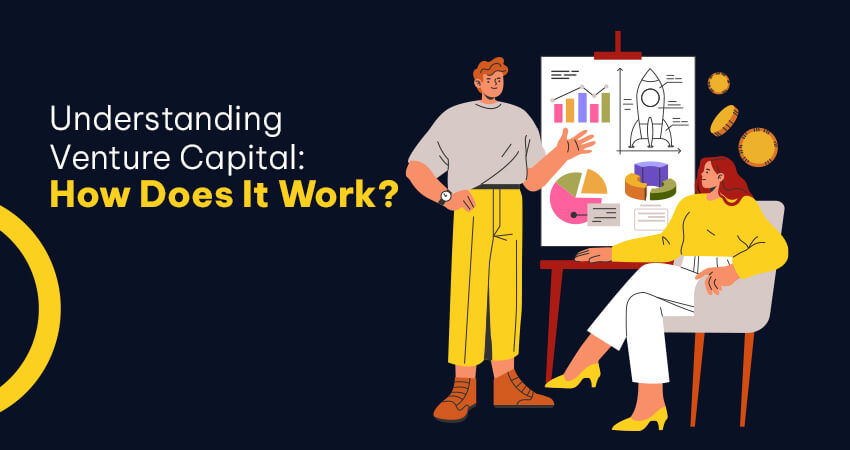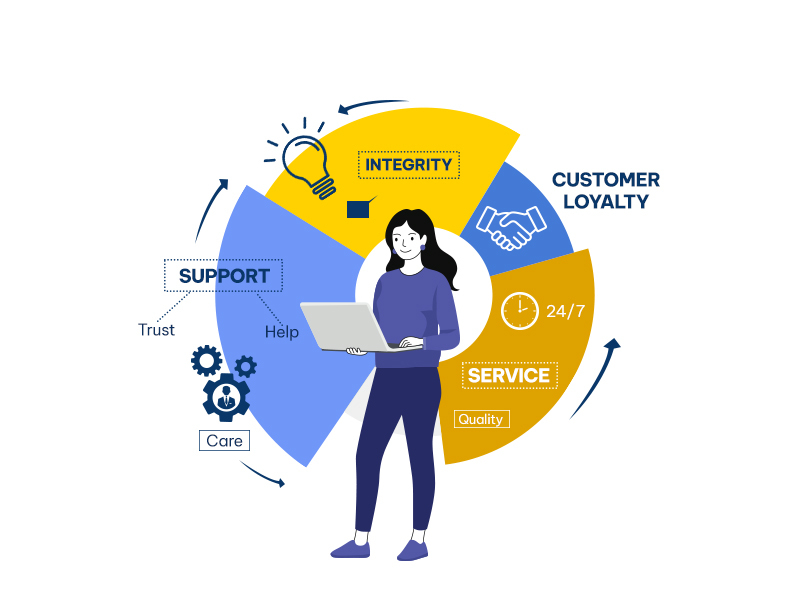
The Trust Stack: What Today’s Consumers Look for Before They Click ‘Buy’
Imagine you’re browsing online on a mobile or laptop. You find something that catches your eye, and you think that it’s exactly what you’ve been looking for. But the moment before you hit the ‘Buy Now’ button, a tiny voice in your head says – “Can I trust this?”
That little voice from your mind is every consumer’s instinct for self-preservation. And in today’s hyper-digitally driven world, “Trust” is one of the biggest currencies that leads to conversions. Whether it’s a ₹500 product or a ₹50,000 investment, building trust is what helps brands win hearts as well as wallets.
In fact, according to a study by Edelman, brand trust a non-negotiable factor in making a purchase. This implies that trust is not merely a positive attribute for a brand to possess but a basic necessity for consumers to engage with it.
On this note, welcome to the world of “The Trust Stack,” a powerful concept that explains what people generally feel before they say yes to your product. Let’s break it down.
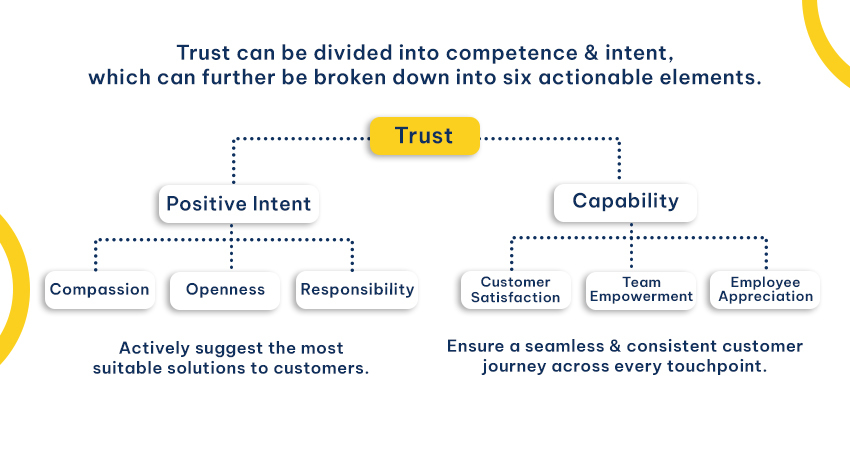
What is The Trust Stack?
To understand this, think of trust as a ladder where each rung depicts a different level of assurance that every customer needs to make a purchase decision. Developed as a psychological model, “The Trust Stack” has three core levels:
- Trust in the Idea
- Trust in the Brand
- Trust in the Product
Whenever a customer is set to make a purchase, they subconsciously move up this ladder. If someone slips or hesitates at any level, it implies you’ve lost the sale. But what exactly causes that hesitation? And how can you prevent it from happening?
Let’s explore each level and what modern consumers look for before clicking ‘Buy’.
Level 1: Trust in the Idea
Before a consumer evaluates your product, service, or brand, they first have to believe in the idea behind the purchase, which could include questions like, “Do I need this? Does this make sense for someone like me? Is this solution even legit?”
Today, we live in a time when information about anything and everything is just a tap away. According to a report by GE Capital, 81% of shoppers research products online before making an in-store purchase. This highlights the significant role of online research in the consumer’s purchase journey, even when the final transaction occurs in a physical store. In short, consumers want to be convinced that the product category itself is valid before they even care about your specific offering. For example, if someone sees a brand selling blue-light blocking glasses, their first question isn’t “Is this a good brand?” but it’s “Do blue-light glasses really work?”
How to build trust for the idea:
- Educate first, sell later: Hence, begin by sharing helpful insights like relevant statistics, real studies, or expert opinions that show why your product matters in the first place. When people see the value, they’re more likely to listen.
- Use relatable content: Talk to your audience like a human, not a chatbot. Whether it’s a blog post, a 30-second reel, or a carousel on Instagram; just keep it simple, real, and relevant. Let them see themselves in your story. You have to explain the “why” behind your product or service in a way that feels like a conversation, not a sales pitch.
- Tap into current behaviour: Lean into what people are already thinking about. Whether it’s eco-friendly living, wellness trends, or the rise of remote work demonstrate how your product naturally fits into that space. Take collagen supplements, for example. Instead of pushing a “Buy Now” message, a brand might say: “Did you know your body’s collagen production starts to dip after 25?” That instantly reframes the product as a timely solution, not just another pill.
Level 2: Trust in the Brand
Once a consumer is sold on the idea, the next thought that usually kicks in is: “Okay, but can I trust them to deliver?”
It’s not just about the product anymore, but rather about who’s behind it. That’s when doubts quietly sneak in: “Is this company even legit?” “Do they have a good track record? “What if they scam me or ghost me once I pay?” This is the moment your brand reputation comes into play. It’s what reassures people that they’re not just buying a product but buying peace of mind.
And this peace of mind is more fragile than ever. A recent PwC report revealed that 32% of consumers will stop doing business with a brand they love after just one bad experience. Even more importantly, when it comes to new or unfamiliar brands, the margin for error is razor-thin.
How to build trust in the brand:
- Authentic storytelling: People love buying from brands that have a face, a voice, and a story. Especially when that story resonates with their values or life experiences, it builds a deeper connection that goes beyond just the product.
- Consistent communication: When your website is up to date, your social media feels alive, and you respond to DMs or emails promptly, it automatically sends a clear message: “Hey, we’re real, and yes, we genuinely care.”
- Proof of community: People trust people. So, show them your tribe through real reviews, heartfelt testimonials, influencer shoutouts, and UGC (user-generated content), where they share their love for your brand. It’s social proof that speaks louder than any ad.
Level 3: Trust in the Product
Now comes the final hurdle. The buyer is sold on the idea. They trust your brand. But there’s still that lingering question: “Will this specific product work for me?” This starts with thoughts like “Will it fit?” “Will it look good on me?” “Is it worth the money?” or “What if I end up not liking it?”. And this last-mile uncertainty can be a total deal-breaker, even after everything else has gone right.
That’s where trust signals, such as clear and customer-friendly return policies, become crucial. Research from Narvar shows that 96% of consumers say a positive return experience directly influences their decision to shop with a brand again. So, it’s not just about being courteous, but it’s a smart move that drives repeat business.
But let’s be real, this isn’t always easy for brands. In 2023 alone, Return Fraud in the U.S. reached a staggering ₹8.43 lakh crore. It’s a growing challenge that forces brands to strike a balance between customer trust and operational caution.
How to build trust in the product:
- Clear visuals and real-life demos: Let people see the product properly from different angles and close-ups, especially how it looks or works in real-life situations. A D2C sneaker brand, for instance, could show how its shoes look on different body types in everyday settings, not just on models in a studio.
- Transparent product descriptions: Avoid fluff and fancy promises. Just tell your customers what the product includes, how it works, what sizes or specifications to expect, and, yes, even the limitations. Clarity builds trust and makes them believe that you are being transparent.
- Social proof that feels real: Genuine reviews, star ratings, and photos or videos from actual customers speak louder than any ad. “I walk 10k steps a day, and these hold up beautifully!” A line like this in a review makes all the difference for someone still on the fence.
- Take the fear out of the purchase: Make it easy for people to say yes. Whether it’s simple return options, a solid warranty, or a no-questions-asked money-back guarantee, these things reassure your customers that they won’t be stuck with something they don’t love. It’s your way of saying, “We’ve got your back.”
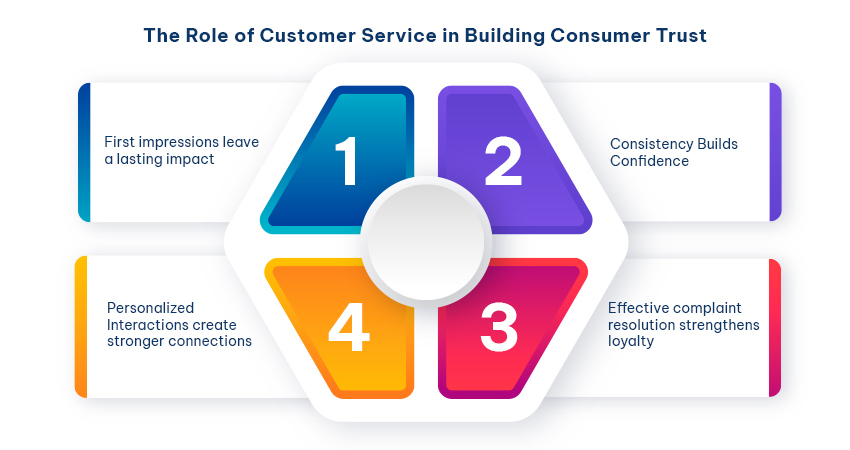
The Missing Piece: Emotional Trust
However, here’s a twist: “The Trust Stack” isn’t just logical; it’s also deeply emotional.
People don’t just want a functional product; they want to feel seen, understood, and valued.
Here are a few emotional trust-builders that make all the difference:
- Shared values that resonate: Whether it’s sustainability, inclusivity, or body positivity when your brand stands for something meaningful, let it show.
In fact, according to a report by IBM and the National Retail Federation, 50% of consumers say they’re more likely to stay loyal to brands that support sustainable practices and are willing to pay an average premium of 70% for sustainability. That’s not just a stat; it reflects how values drive buying decisions.
- A tone that feels human: How your brand speaks truly matters. Are you warm, supportive, playful, or no-nonsense? Your tone sets the emotional tone and helps people connect on a deeper level.
- A post-purchase moment that delights: Trust doesn’t stop once the payment is made. Thoughtful packaging, a handwritten thank-you note, or even a follow-up message can turn a good purchase into a memorable one.
Zendesk research shows that 74% of consumers feel more loyal to brands that consistently deliver memorable customer experiences like excellent after-sales services These small but meaningful touches build emotional trust. This invisible glue transforms a first-time buyer into a loyal fan, and eventually into someone who recommends you to others without even being asked.
Trust Signals in Action: What the Latest Data Tells Us
If trust is the foundation of every buying decision, then these numbers show just how high the stakes are. How fast you reply to what your brand stands for creates a moment to earn or lose trust. Here’s what the latest research reveals about where consumer trust is earned today.
| Insight Area | What the Data Shows | Why It Matters |
| Authenticity & Values | 71% of consumers prefer buying from companies aligned with their values. | Purpose-led brands win long-term loyalty, especially among Gen Z and Millennials. |
| Customer Response Time | 75% of consumers expect a brand to respond to social media inquiries within 24 hours. | Fast replies signal reliability and human connection, which is critical in the trust-building stage. |
| Influence of User Reviews | 93% of consumers report that online reviews significantly impact their purchase decisions. | Real customer voices carry more weight than brand advertising. |
| Loyalty Driven by Emotional Connection | Customers with an emotional connection to a brand have a 306% higher lifetime value. | Emotional trust isn’t fluff; it drives revenue and referrals. |
Stacking It Right: Real-World Examples
boAt (Lifestyle Electronics Brand)
- Educates consumers on affordable, high-quality audio wearables and the need to #PlugIntoNirvana, through which they build trust in the idea
- Founder-led brand with Aman Gupta at the forefront, who is relatable, media-savvy, and active in conversations that shape the category, with which they develop trust in the brand
- Backed by third-party reviews, influencer shoutouts, and clear product specs on every listing to create trust in the product
Groww (Fintech Platform)
- Demystifies investing for first-time users by educating them through YouTube, blogs, and app UX to build trust in the idea.
- Visible and vocal founders and a brand built on simplicity, transparency, and confidence to instill trust in the brand
- Present things with utmost clarity, featuring real user testimonials, solid app ratings, and SEBI registration details upfront to foster trust in the product.
Each of these brands climbs the Trust Stack with clear intent: educating first, communicating clearly, and backing it all up with proof. And that’s exactly how they’ve earned the loyalty of both users and investors.
So, What Should You Do as a Brand?
Here’s a quick checklist to earn trust before the click:
| Trust Level | Action Step |
| Idea | Educate, don’t pitch. Share why the product category matters. |
| Brand | Show the people, purpose, and proof behind your company. |
| Product | Remove every doubt with visuals, information, and social proof. |
| Emotional Layer | Connect with the buyer’s values, emotions, and post-purchase joy. |
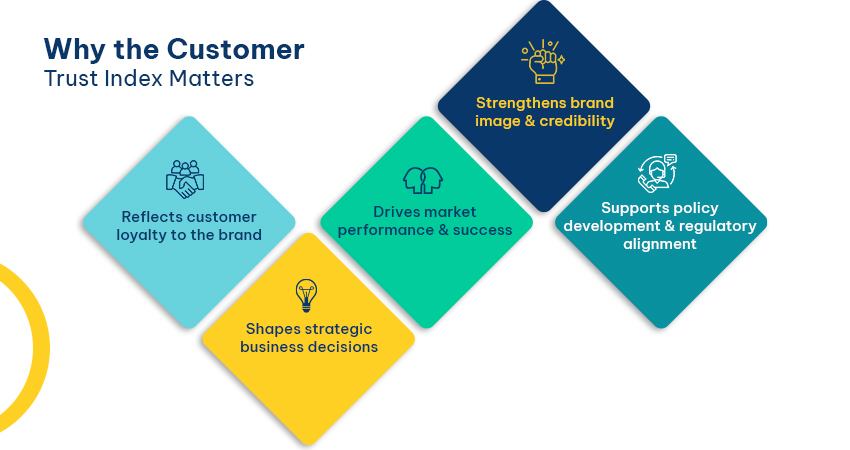
Final Thoughts: Trust is Earned, Not Bought
In a world of endless scrolls and infinite choices, trust is the one filter consumers truly rely on. It’s what makes someone pause mid-scroll, pay attention, and say, “This feels right.”
So the next time you’re planning a campaign, designing a website, or launching a product, just take a moment to ask yourself:
Have I helped my customers build trust?
Because when you do, you’re not just making a sale. You’re starting a relationship. And they last far beyond a single transaction.




